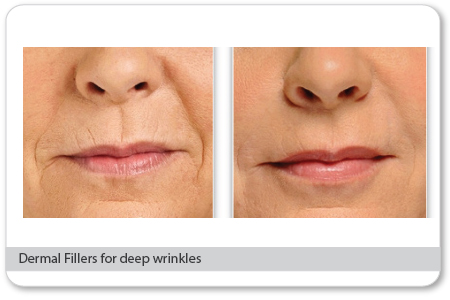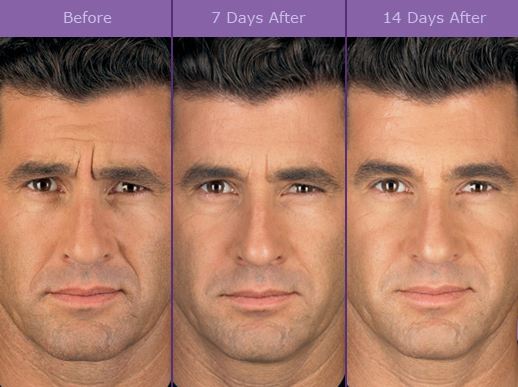By Sandra Tyler
19 Apr, 2015
Botox, Breast Augmentation, Butt Augmentation, Comfort Anesthesia, Cosmetic Getaways, Ear Surgery, Esthetician, extractions, Face Lift, facial, facial rejuvenation, facials, Featured Procedures, Fillers, hair removal, Juevederm, Labiaplasty, Laser, liposuction, Male Surgery, Misc, News & Blogs, Rhinoplasty, skin care, spa, Special Offers, Tummy Tuck
breast augmentation, facelift, lifestyle lift, lifstyle, liposuction, mommy makeover, tummy tuck
The 2014 plastic-surgery statistics will be released later today by the American Society for Aesthetic Plastic Surgery (ASAPS). Thanks to an advance peek, I can report that butts are getting bigger, while breasts are getting smaller.
Buttock augmentations are up 86 percent over 2013. Michael C. Edwards, a plastic surgeon and the president of the ASAPS notes that most women don’t want giant backsides, they just want more shapely ones. The other big news is breast revisions, which are up 30.4 percent. Many attribute that rise to aging implants in need of replacement, along with many women’s desire to switch from saline to silicone-gel-filled implants, which may not have been available when they originally had surgery. What’s more, insiders say most of these women are exchanging their old implants for smaller replacements.
The other news in the numbers is a five percent drop in overall procedures: 10,663,607 in 2014, down from 11,419,610 in 2013. The decrease was mostly in minimally-invasive procedures like Botox and fillers. No explanation for this was offered by the ASAPS, but could it be what I call injection fatigue? Many women I’ve spoken to don’t want to return again and again for refills. Surgical procedures fell only 1.5 percent from 1,883,048 to 1,764,956, a drop that the number crunchers say is not statistically significant.
Fat—and getting rid of it—is still a high priority. In recent years the top surgical procedures for women have flipped back and forth between breast implants and liposuction. In 2014, liposuction held the number one spot, followed by breast augmentation (down 8.5 percent), tummy tuck, blepharoplasty (or eye lift), and in fifth place, the breast lift. Facelifts are in eighth place.
Liposuction may still be king (or is it queen?) in the surgical department, but non-surgical fat reduction with devices such as CoolSculpting and VASERshape rose a whopping 42.7 percent, from 94,922 in 2013 to 135,448 in 2014. That number could rise even more this year if ATX-101, an injection for fat reduction under the chin, gets FDA clearance, which it’s expected to receive.
More
With all of the celebrities wearing high heels upwards of 7 inches nowadays, us regular folk have been having a hard time of it. With intense and blinding foot pain, wobbling around rather than strutting, the countless falls (yes, that is how I got a hole in the knee of my favorite black jeans), and God forbid…stairs…how do we girls do it?
Well, it would appear women all across the globe have been turning to the surgeon’s knife to ensure that their feet are high heel friendly. New research has shown that the number of cosmetic procedures that have been performed on feet have doubled in the last year. The procedure, known as the “Toe Job” takes around 20 minutes and is apparently pain-free and creates a pillow effect by injecting collagen into the foot. It reportedly eliminates the painful burning that is generally associated with wearing high heels. The treatment costs £320 ($519) and can last up to 6 months.
Crazy what people will do for fashion!
More
Protein is the name given to a group of large, complex molecules that form the basis of tissues in living organisms. These groups, which consist of one or more long chains of amino acid residues, perform a huge number of essential roles in our bodies, including aiding the growth and repair of cells, maintaining immune function and much more.
When we are deficient in protein, we begin to suffer from fatigue, slow healing, muscle atrophy and other unpleasant symptoms. Therefore, it’s important that we obtain enough protein from our diets to remain in optimal health. But which whole foods contain the highest amounts of this essential macronutrient? Though opinions on this subject differ, the following foods tend to provide the highest protein-calorie ratio.
Chicken — There’s a good reason why chicken is a popular food with bodybuilders. One average-sized chicken breast supplies our bodies with a whopping 17 grams of protein, making it one of the most protein-dense foods in existence. The legs and thighs of the chicken are also packed with protein, as well as large amounts of selenium, niacin, vitamin B6 and phosphorous.
Of course, the meat of chickens raised on organic, sustainable farms is the healthiest. If you are going to stick with non-organic chicken, consider removing the skin from the meat; this is where the toxins accumulate.
Fish — Most fish is an excellent source of protein, but salmon, tuna, snapper and halibut seem to be particularly rich sources of it. One fillet of each contains around 22 grams of protein, while perch, flounder, sole, cod and tilapia contain between 17 to 21 grams of it. Fish is also rich in omega-3 fatty acids, which keep our heart and brain healthy, as well as vitamin D, riboflavin, calcium and magnesium.
Sadly, not all fish is safe to eat these days due to the ongoing contamination of our oceans. To minimize the risk of toxicity, favor sustainably caught fish sourced from the Atlantic Ocean when possible.
Pork — One pork chop provides 33 grams of protein, which is more than half of the recommended daily intake of protein for adult women (46 grams) and adult men (56 grams). Other pork products, such as pork roast, ham and bacon, are also good sources of protein.
Pigs are widely considered to be dirty animals, and for good reasons. Aside from digesting their food in a mere 4 hours (compared to 24 hours in ruminant animals), pigs lack the sweat glands necessary for detoxification, making them walking vessels of harmful organisms. For this reason, pork should always be purchased from reputable organic farms.
Beef — Though red meat tends to contain a lower protein-calorie ratio than white meat, it’s still famously rich in protein. One T-bone steak, for instance, supplies us with around 19 grams of protein, as well as large amounts of bio-available iron, zinc and vitamin B12. Even processed beef products, such as beef jerky, contain respectable amounts of protein.
Eggs — One large egg contains 6 grams of protein, making eggs one of the finest protein sources for vegetarians. Though most of this protein is contained in the white, don’t forget to eat the yolk too; this is where the other essential nutrients, including the vision-boosting carotenoids, lutein and zeaxanthin are held.
Greek yogurt — According to Bodybuilding.com, an 8-ounce serving of Greek yogurt supplies us with 23 grams of protein, making it the most concentrated dairy source of protein. Greek yogurt, which has been strained to remove its whey content, is also a fantastic source of probiotics. Favor organic, unsweetened brands when possible.
Other great whole food sources of protein include unprocessed cheeses, legumes, nuts, seeds, certain gluten-free grains (such as buckwheat and quinoa), spirulina and chlorella.
More
Cosmetic plastic surgery is on the rise. In the current job market, it seems tattoo removal–much like eyelid surgery in Asia–is becoming a new path to employment. From botox injections to breast augmentations, revamping the human body is a desire shared by earth-conscious individuals and unconcerned beauty seekers alike.
But is it possible to be eco-friendly and still partake in an elective surgical alteration of the body? Can tattoo removal be considered any more or less drastic a process than getting a tattoo in the first place? Is there a limit to which procedures are environmentally friendly “enough” to be acceptable to the green community?
Procedures should be weighed individually. An earth-conscious surgery seeker could consider his or her options by analyzing the type and source of the chemicals or fillers used in a given procedure, the source and ethical origins of the equipment used to laser the tattoo or slice the skin, the end location of surgery waste products, and even the fumes or particles put into the air that the practitioners have to inhale during the surgery.
Setting aside the controversy over self-esteem issues and the ideal of aging gracefully, cosmetic surgery is not likely to disappear from the radar any time soon. Those with an eye on a future procedure for themselves might do well to encourage the industry to green itself up.
Bottom Line is: The short (but not so satisfying) answer to the possibility of green plastic surgery is, “Maybe.”
In some ways, the cosmetic surgery industry is already moving in a greener direction. Breast implant material is likely to eventually be human tissue, and the source and type of chemicals used in some procedures (such as chemical peels and lip injections) boast more ethical and sustainable ingredients and sources every year. Although these are steps in the vein of improving and protecting human and environmental well-being, even natural or ethically produced ingredients may be unhealthy for human use or damaging to the environment.
If you are considering a cosmetic surgery procedure, just think about doing your due diligence. There are many ways to achieve health and beauty without harm to the environment. If you do opt for a surgical or chemical alteration, ask your surgeon about the issues that are important to you. Inquire about the origin of products and surgical materials before consenting to a procedure if the sustainability and ecological impact of your choice is likely to affect your decision. The more frequently clients request eco-friendly practices, the greener the future of plastic surgery is likely to become.
More
What treatment is right for me? In other words, don’t ask the doctor for a specific procedure. Instead, explain the issues that need to be addressed and let the doctor offer the solution. ASDS doctors have extensive experience doing a variety of aesthetic treatments.
Is the specific laser, device or technique appropriate for my skin type? ASDS doctors know that cosmetic procedures and treatments are not one-size-fits-all. Each patient is evaluated for skin type as part of the initial evaluation.
How much does it cost? As a rule, almost all cosmetic surgery is considered “elective” and is not typically covered by insurance plans. Although some spas, salons and walk-in clinics offer cosmetic medical procedures at lower prices, consumers should be aware that “these discounted prices could put your health at risk as a result of the provider’s inadequate training and lack of expertise.”
What should I do to prepare for the treatment? Carefully following the physician’s guidelines before the procedure can greatly impact the final results.
Have you reviewed my medical history? Information that a patient may think is unrelated to their treatment may in fact play a key role in recovery or the length of a procedure. Patients should be sure to disclose their specific surgery history, any allergies and any pharmaceuticals, over-the-counter drugs or herbal supplements that they are taking at the time of their procedure.
What are my pain management and anesthesia options? To help avoid the risks associated with general anesthesia, ask the physician about alternative pain management options. Many techniques that are performed in a physician’s office can be done under local anesthesia, eliminating some side effects such as nausea and headaches that often accompany general anesthesia. Using a short-term local anesthesia may also eliminate complications that are sometimes related to general anesthesia, including allergies and heart problems.
What are the risks? Discuss the potential side effects of the proposed treatment, how often they occur and how they will be handled if they do occur.
What should I expect after the procedure is performed? Besides a discussion about the short-term and long-term effects, activity restrictions and the expected recovery period, doctors should share before-and-after photos of previous patients and discuss realistic expectations.
More
Liposuction is the leading option to diminish the appearance of stubborn bumps and lumps from localized fat and help sculpt areas to appear more toned and trim. Tumescent liposuction using local anesthesia as developed and performed by dermatologic surgeons is extremely safe. However, as with any invasive procedure, liposuction has risks. Some simple steps can help prevent potential complications before and after a liposuction procedure. Researching the procedure and doctor, having realistic expectations, using local anesthesia and following post-operative directions are just a few guidelines that will help to ensure the patient receives the best results.
ASDS offers some additional tips to ensure a positive result:
Do’s:
- Do your research: There is a lot to consider when undergoing liposuction. Choosing a dermatologic surgeon at a reputable location is very important and could help to decrease complications.
- Do maintain a healthy weight before surgery: Liposuction is a procedure for shaping the body by removing localized fat in areas such as the abdomen, thighs, arms or neck. For best results, candidates should be close to normal-weight with firm, elastic skin. This is not a weight loss procedure.
- Do understand your options: There are several options to liposuction surgery. Tumescent liposuction, the safest procedure, uses local anesthesia, injecting the fat with a large amount of anesthetic liquid causing it to become firm, making the removal of fat easy and painless while leaving patients less bruised. Ultrasonic and laser-assisted liposuction technique liquefies fat upon removal, decreasing recovery time. These are sometimes useful adjuncts. It’s important that you speak with your doctor to choose the right procedure for you.
- Do follow post-operative directions carefully: Doctors make suggestions after surgery to further avoid complications. Moderate physical activity, such as walking, the day after surgery may reduce the risk of clotting. Also, in some cases, compression garments should be worn around the treated area to reduce swelling.
Don’ts:
- Don’t expect to look “skinny” the day after surgery: You will always look better immediately after a procedure but will not realize the final result for several months.
- Don’t hesitate to ask questions: Before a consultation with a dermatologic surgeon a patient should be prepared with a list of questions for their doctor. Questions should help the patient understand the liposuction process, what to expect after the procedure and learn more about the doctor’s training and experience.
- Don’t continue over-the-counter supplements: Products such as aspirin, vitamin E and some herbal products slow blood clotting. Additionally, some anti-inflammatory medications can increase the chances of bleeding during surgery. Prior to surgery, the doctor will discuss any medications and supplements you are taking and which ones should be discontinued.
- Don’t assume all areas are treatable: Most, but not all, body parts are amenable to treatment. The most popular areas include the neck, chest, arms, waist, hips, abdomen, buttocks, thighs, knees and ankles. Your dermatologic surgeon will tell you if you are a good candidate for the surgery.
More
By Sandra Tyler
16 Mar, 2015
Botox, Fillers, Juevederm, Misc, News & Blogs
botox, collagen, Cosmetic Surgery, facial aging, fat transfer, fillers, hyaluronic acid, juevederm, non surgical, restelyn, wrinkles
Fillers are popular. To help you decide whether this treatment is right for you and to have the treatment performed safely, the AAD provides the following facts.
What happens when I get a filler?
The procedure varies with the filler your dermatologist will use, the part of the body to be treated, and your medical history. Here are some general guidelines about what you can expect:
- Most filler treatments take between 15 and 30 minutes and require one office visit.
- Before getting the injections, you may need ice, an anesthetic applied to the skin, or a nerve block (an injection). This varies with the filler and area to be treated. Hands generally do not need anesthesia; lips often require a nerve block.
- Your dermatologist will inject the filler into the area, often giving you several injections to produce the best results.
- You may feel a stinging or burning sensation as the filler is injected.
- A few fillers require allergy testing to make sure you do not have an allergic reaction.
- If you need allergy testing, you must wait for the results from the allergy test before you can get the filler.
- If your own fat will be used as a filler, the entire treatment can often be completed in one day. You will first have a procedure called tumescent liposuction, which safely removes a small amount of fat from another area of your body. The fat removed from your body is then processed so that it can be injected into the area that needs more fullness.
What must I do after getting a filler?
Most patients can return to their everyday activities after leaving the office.
To reduce any redness and swelling from the injections, your dermatologist may recommend icing the area for 15 to 20 minutes before you leave.
Before you leave the office, you should be able to apply makeup.
After leaving the office, you should:
- Wait until the next day to exercise or do any other strenuous activity.
- Stay out of the sun and do not use a tanning bed or other type of indoor tanning.
- Avoid touching the treated area for three days, unless you receive instructions to massage the area.
- One filler, poly-L-lactic acid, requires you to gently massage the treated area for about 5 minutes several times a day for 1 to 2 weeks. Your dermatologist will tell you if you need to massage the area.
Is there downtime?
This varies with the filler. Most fillers do not cause downtime. Be sure to ask your dermatologist whether you will have downtime.
When will I see results after getting a filler?
This also varies with the filler. Most fillers fill the skin, so they produce immediate — or close to immediate — results. A filler also can stimulate your body to produce collagen, but this takes time.
Most fillers offer immediate results
| Filler |
When see results |
| Collagen |
Immediate |
| Hyaluronic acid gel |
Immediate |
| Calcium hydroxyl apatite |
Immediate |
| Poly-L-lactic acid |
2 or 3 weeks |
| Fat taken from your body |
Immediate |
| PMMA (polymethylmethacrylate) |
Immediate |
You may see other fillers advertised. All fillers listed above have been approved by the U.S. Food and Drug Administration (FDA), except for self-donated fat. This filler does not require FDA approval because it comes from your own body.
Will I look natural?
To get natural-looking results, the person injecting the filler must have expertise in placing the filler.
Dermatologists recommend not overdoing fillers. Your results will look more natural with a conservative approach. For example, patients who have very thin lips should not get dramatically fuller lips. Creating fuller lips in these patients could be extremely unflattering because the lips might start to resemble a duck’s bill.
How long will the results from fillers last?
Most fillers offer temporary results and require repeat treatments to maintain the results.
Temporary fillers offer one key advantage. These can be injected as needed to replace lost fullness. This is advantageous because no matter what we do, our skin continues to age.
How long fillers typically last
| Filler |
How long it lasts |
| Collagen |
2 to 3 months (often longer when treating scar) |
| Hyaluronic acid gel |
4 to 12 months |
| Calcium hydroxylapatite |
6 months to 1 year |
| Poly-L-lactic acid |
1 to 3 years |
| Fat taken from your body |
1 to 3 years (often longer when treating a scar) |
| PMMA (polymethylmethacrylate) |
permanent |
You should ask your dermatologist how long the recommended filler should last in the area you want treated.
When is it safe to get another treatment?
If you get a temporary filler, you can usually have another treatment when the signs of aging reappear.
What are the possible side effects?
After receiving filler injections, some patients have minor, temporary side effects where they were injected. You may have:
- Redness
- Swelling
- Tenderness
- Bruising (occasionally)
These side effects tend to clear within 7 to 14 days — if not earlier.
Serious side effects are more likely when the person injecting the filler does not have adequate medical training and experience. To protect your health, you should never get filler injections in a non-medical setting, such as non-medical spa, salon, or someone’s home.
When fillers are injected in a non-medical setting or by an inexperienced provider, reports of more serious side effects increase dramatically. These side effects include:
- Lumps.
- Ridges.
- Over-filled areas.
- Allergic reaction.
- Skin discoloration.
- Infection.
- Severe swelling.
What is the safety record for fillers?
This is one of the safest cosmetic treatments available. For years, dermatologists have been refining the use of fillers to diminish signs of aging. Today, dermatologists safely treat people of many ages and all skin colors.
More
By Sandra Tyler
13 Mar, 2015
Botox, Misc, News & Blogs
botox, brotox, enhancement procedure, face lift, facelift, freeze face, lifestyle lift, wrinkles
Ladies, you may be surprised to know what men talk about on “guy’s night out,” besides women and sports — “Brotox,” also commonly known to the rest of us as Botox (botulinumtoxin A). The long-time cosmetic enhancement procedure, often linked to women, has now reached a wide group of men who desire to appear more youthful. The number of men undergoing Brotox has gone up 10 percent from last year, but why? Amid fear of competition with younger folk in the workplace and in their personal lives.
“Any man’s afraid he’s gonna get bumped by somebody younger in business or personal life too. I think once he gets over the stigma of it being something feminine, I could see more men being drawn to it,” said an unidentified man.
A multitude of men are currently making more appointments to “freeze” time and hold onto their eternal youth through this age defying treatment, but does the “freezing” effect work? Botox injections contain the bacterium Clostridium botulinum that can block signals from the nerves to the muscles so the muscle can no longer contract, preventing the onset of wrinkles when injected. The treatment is used on forehead lines, crow’s feet, or lines around the eye, and frown lines. However, men and women, should note wrinkles caused by sun damage and gravity do not respond to Botox injections.
The Botox procedure takes only a few minutes, with no anesthesia required. Patients will start to see results anywhere from three to seven days when the procedure begins to take effect. It is advised to avoid alcohol at least one week before treatment, and to stop aspirin and anti-inflammatory medications two weeks before treatment in order to reduce bruising associated with Botox.
Men have begun to adopt a more open attitude toward cosmetic procedures and have become more aware of the treatments available to them, as the age range of men being treated has widened. The BRO culture has fostered recent trends like the Hipster beard transplant, and now Brotox. The desire to climb the career ladder and keep up with the “younger-looking” has become the crucial reason why men opt for Botox — it’s surgery-free. Now, both men and women, vie to be the youngest and most desired of them all.
More
http://
World News Videos | US News Videos
More
Kim Kardashian is boosting plastic surgeons’ bottom lines.
Two doctors’ organizations have tallied up the cosmetic procedures performed last year, and butt augmentation skyrocketed — as did a controversial surgery to reshape women’s genitals. Meanwhile, old-fashioned breast enlargement, still the most common cosmetic surgery, took a dip.
Surgeons say stars who celebrate their cabooses are fueling the surge, but critics contend it’s medical marketing that has convinced some Americans they need posterior padding at the cost of thousands of dollars and physical risks. Click Below to read more.
http://www.nbcnews.com/news/us-news/butt-augmentation-labiaplasty-rise-plastic-surgeons-say-n312996
More









